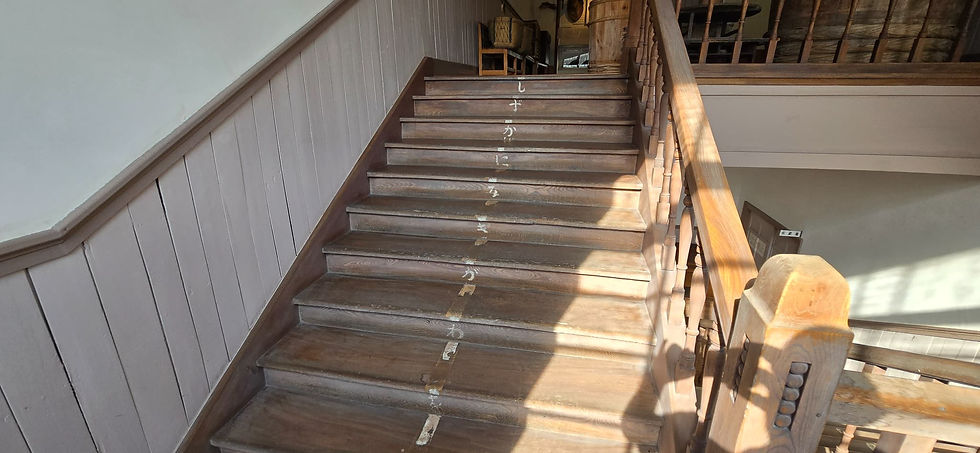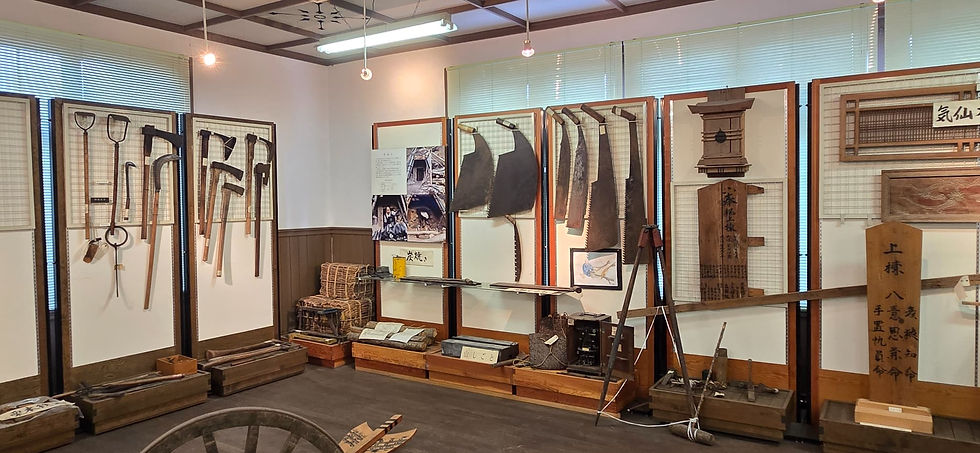The Sumita Folklore Museum – A Repository of theTown’s History, Culture and Traditions
- visitkesen
- 9月30日
- 読了時間: 2分

Nestled in the junction between highways leading to Rōkandō Cave and the City of Tono lies the Town of Sumita Folklore Museum. The magnificent wooden structure showcasing local Kesen carpentry techniques was built in the early Showa era (1926-1989), and christened Kamiarisu Elementary School. In the 1980s when a new school building was needed, it was decided that the original building would be disassembled piece by piece and rebuilt 100m west of the original location to house the new museum. After painstaking work preserving the intricate woodworking of the building, and assembling the locally preserved artifacts to showcase the museum was opened to the public in 1995.
From the moment you enter the museum you immediately begin to appreciate that the largest exhibit on display is actually the building itself. From the smooth, wooden floors, paneled walls, wood-framed windows and sweeping staircases with carved banisters it makes one feel as though you’ve stepped back in time. The hand-painted messages between the staircase boards reminding students to ‘keep quiet’ and ‘keep right’ when walking up to the second floor is both charming and nostalgic.


The museum is broken up into several sections, mainly in the former school’s classrooms, each showcasing the various aspects of Sumita’s history, culture and its people. The first floor features a display of one of Sumita’s main industries in the late 1800s, gold mining and panning in the Kesen River. The display has an extensive number of tools showing how the gold was extracted, from a rock-crushing mill to finely woven mats used to catch the fine gold dust from the river.


The second floor opens into a wide room featuring a recreated country home hearth that would have been commonplace during the late Showa period. There are also an extensive display describing rice production and processing, with detailed information and antiques explaining about threshing and storing of harvests.
As the forests make up more than 90% of the land in Sumita there is also a comprehensive display of the history and stages of Sumita’s forestry industry, from timber harvesting to the intricate carpentry work of the local Kesen area craftsmen―an industry that still makes up a large percentage of Sumita’s economic industry.


The museum is open Monday to Saturday from 9:00AM to 4:00PM but closed on Sundays and national holidays. Admission is 220 yen for adults and 110 yen for children and students.
Access by car is via Route 340 from Tono to the north, or from Rikuzentakata from the south. Additionally, Route 107 connecting Kitakami and Ofunato City will also connect you to Route 340, with then a quick, 10 km north drive to the museum. Bus service does exist between Morioka and Ofunato, but is limited to a few times a day, so be sure to check online for the most recent schedule (https://world.jorudan.co.jp/mln/en/). Also, you will need to request to be let off at the Kamiarisu Police Box (上有住交番), as the museum is across the street.






























コメント